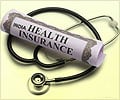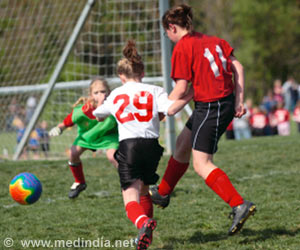
‘Ten thousands steps are recommended for girls in the age of 14 and 17 daily.’
Tweet it Now
The study was led by researchers at the University of Pittsburgh School of Medicine and Graduate School of Public Health. The study was published in Medicine & Science in Sports & Exerciseled by lead author Bonny Rockette-Wagner, Ph.D., director of physical activity assessment at Pitt Public Health.
Girls who were obese or had given birth in the last year were even less likely to achieve adequate levels of physical activity.The Pittsburgh Girls Study has been following girls in 89 Pittsburgh zip codes since 1999.
Kathleen McTigue, M.D., associate professor of medicine and epidemiology at Pitt, and senior author of the study, spearheaded a National Institutes of Health (NIH) funded ancillary study to examine step counts in the participants.
The goal was to collect information on how many steps girls enrolled in the Pittsburgh Girls Study took on a regular basis. Step counts were measured once a year from 2010 to 2013 using a pedometer. Activity data was reported on over 900 girls who were 14 to 17 years old when the pedometer study started.
Advertisement
According to the National Health and Nutrition Examination Survey, which collects data across rural, suburban and urban settings, U.S. females ages 12 to 19 average 9,000 steps per day, compared to 11,000 steps for their male counterparts.
Advertisement
"When we take into account that persistent and growing gap between boys and girls, and compare our findings in Pittsburgh to national averages, a concerning picture emerges: urban teenage girls are significantly lagging behind in physical activity," said Rockette-Wagner.
"From previous studies, we know that this puts them at risk for poor quality of life, the development of chronic diseases and other negative health outcomes."
In the Pittsburgh study, girls who identified as non-Hispanic African-American averaged slightly more steps than their counterparts. Markers of poverty and poorer neighborhood environment also tended to be associated with slightly higher step counts in this population.
Based on previous studies in urban populations, this counter-intuitive relationship between poverty status and activity could be due, in part, to the necessity of walking for transportation. However, it should be noted that, overall, activity levels are low for the majority of girls in the study, regardless of race, ethnicity or poverty. The analysis also found that average steps per hour peaked near the start of the school day, from 8 to 9 a.m., and again in the late afternoon, from 4 to 5 p.m. And, more steps overall were accrued during school hours, from 8 a.m. to 3 p.m., than other periods of the day.
"This highlights the importance of school-based activity for these urban youths," said Rockette-Wagner. "However, this finding shouldn't underemphasize the importance of opportunities for safe physical activity outside of school. The dominance of school-based activity in our study also may suggest a lack of alternative options for these girls to get out and move when they are not in school."
Future studies should focus on examining a large group of participants, similar to the Pittsburgh Girls Study, that also include youth living in other metropolitan settings so that comparisons can be made and further insights gained, added Rockette-Wagner.
Source-Eurekalert










